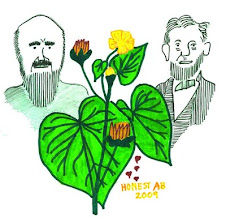Mega-fires! Or, megafeux in French, as in the book Quand la Forêt Brûle: Penser La Novelle Catastrophe Écologique by Joëlle Zask (Premier Parallèle, 2019). (When the Forest Burns : Thinking about the New Ecological Catastrophe.)
Through much of my professional life, I have considered fires (in forests, prairies, and chaparrals) to be ecologically beneficial. Where to begin with the ecological benefits of fires? Fires clear away underbrush and release nutrients in the dead litter into the soil where new plants can grow back and use them. The sunlight can now reach the soil surface, warming it up earlier in the spring than would have been possible with a thick litter layer still in place. In many cases, the perennial plants that were present before the fire grow back, more vigorous than they were before. This is the case for hundreds of species of prairie plants, which maintain their thick sod of roots and underground stems. It is also true, as I have seen for the cross timbers forest of Oklahoma. As for the plants that grow back from seeds in the soil, the seeds germinate profusely, as I have seen Phacelia strictiflora do in cross-timbers forests after fires. So frequent are these fires that many plants have adapted to them even to the extent of requiring the fires to maintain their populations. My research has shown that Phacelia seeds require smoke chemicals in order to germinate; the same is true for hundreds of species around the world in fire-prone habitats such as chaparral. How can fire, which has so many ecological benefits, be bad?
Fire has long been a tool of habitat management. The whole landscape evolved with wildfires. Since the spread of western civilization, wildfires have decreased, mostly because people do not like to have their homes destroyed by fire. Ecological landscape managers have to set control burns to compensate for the decline in wildfires. This photo shows a control burn near Lake Texoma in Oklahoma in 1999.
In the absence of natural fires and control burns, dead biomass builds up under the trees and virtually assures that a fire will break out soon and be very big.
White landscape managers were not the first to use fire as a management tool. All over the world, native peoples have set fires to forests and fields to renew their growth. This was nowhere more true than with the Native peoples of North America, as I describe in my book Forgotten Landscapes.
But times are changing. In particular, global warming is changing the landscape. As Naomi Klein said in the title of her book about the economics and politics of global climate change, This Changes Everything. It has certainly changed the scientific way of thinking about fire.
Global climate change includes not only hotter temperatures but less rainfall and more wind in many areas, such as southern Europe during recent long, hot, dry, windy summers. This is not a prediction; it is something that has already happened in many parts of the world. Some of these forest fires have flames almost a hundred feet tall and that spread faster than anybody can run. The fires consume houses, including outdoor free-standing barbecue grills which are built to withstand fire: the grills simply melt.
Other human activities promote the spread of large fires. All around the world, not only in rainforests but even where I used to live in Oklahoma, native forests are cut down and replaced by tree plantations such as loblolly pine. Tree plantations, with breezy understories and with flammable, fast-growing trees, burn more readily than native forests.
The result is that, right when we need control burns more than ever, we do not dare to conduct them. There is a tremendous liability cost associated with a control burn that gets out of hand. If a private citizen loses so much as a shed to a government control burn, the land-owner will sue for lots of money. As global warming progresses, almost any control burn is guaranteed to escape and become a major fire.
A mega-fire, unlike most smaller fires, can and do sterilize the soil, so that there are no roots, stems, or seeds to grow back. The resulting moonscape will recover, but it might take many decades and suffer uncontrolled soil erosion in the meantime.
The time is coming, and in some places is already here, when there will be no such thing as a little control burn. There will be only mega-fires.
I have retired, so it is too late for me to tell my classes, forget everything I said about control burns.





